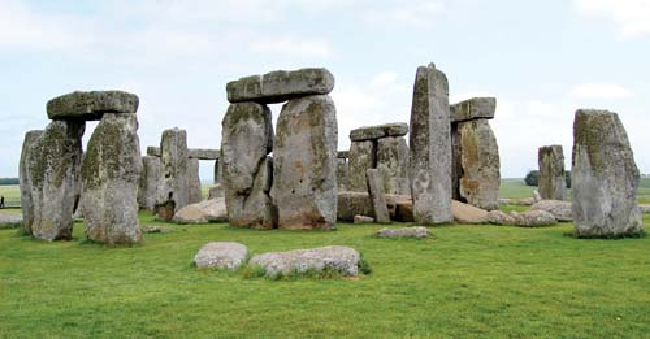Travel Reference
In-Depth Information
• Shuttle buses (green land-trains) depart about every 10 minutes from the platform behind
the gift shop to the stone circle. The trip takes six minutes. If you'd prefer, you can walk
the 1.25 miles to the site along a level, paved path.
Along the way, you have the option of stopping at
Fargo Plantation,
where you can
see several burial mounds (tell the shuttle attendant if you want to disembark here). After
wandering through the burial mounds, you'll need to walk the rest of the way to the stone
circle (about 15 minutes).
Stone Circle
(See “Stonehenge” map,
here
.)
As you approach the massive structure, walk right up to the knee-high cordon and let your
fellow 21st-century tourists melt away. It's just you and the druids...
England has hundreds of stone circles, but Stonehenge—which literally means
“hanging stones”—is unique. It's the only one that has horizontal cross-pieces (called lin-
tels) spanning the vertical monoliths, and the only one with stones that have been made
smooth and uniform. What you see here is a bit more than half the original structure—the
rest was quarried centuries ago for other buildings.
Now do a slow
clockwise spin
around the monument, and ponder the following
points. As you walk, mentally flesh out the missing pieces and re-erect the rubble. Know-
ledgeable guides posted around the site are happy to answer your questions.
It's now believed that Stonehenge, which was built in phases between 3000 and 1500
B.C.
, was originally used as a cremation
cemetery.
But that's not the end of the story, as
the monument was expanded over the millennia. This was a hugely significant location to

